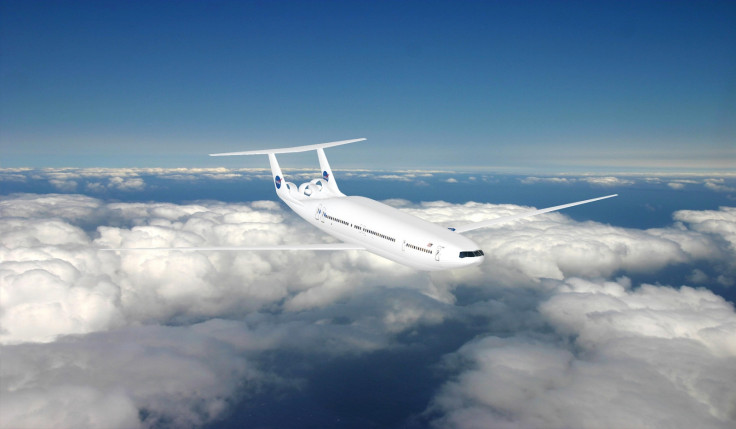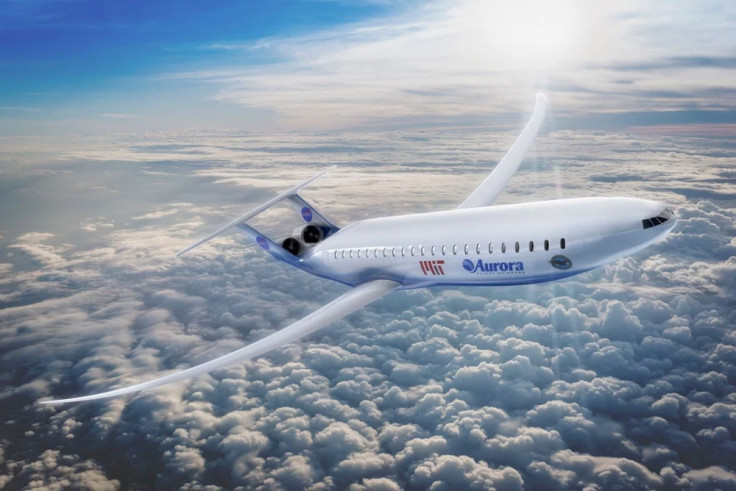Aurora D8: Nasa spending $2.9m to revitalise 'double bubble' subsonic twin-hull planes by 2027
Nasa wants Aurora Flight Sciences to create a demonstrator model for the super-efficient twin-hull aircraft.

Nasa has decided to invest $2.9m (£2.19m) in order to realise an innovative plane concept invented by MIT and Aurora Flight Sciences in 2008 which could make subsonic planes much more efficient than they are today.
The Aurora D8, which flies at a speed of Mach 0.764 (582 mph, 936 km/h), was originally developed by Aurora Flight Sciences and MIT as part of Nasa's N+3 Program, which provided funding of technologies for new aircraft that would be substantially more efficient to aeroplanes today, that would be put into service in the 2030s.
And in 2015, the US Federal Aviation Administration (FAA) chose the Aurora D8 to receive funding to be developed under its Continuous Lower Energy, Emissions and Noise Program (Cleen II). Nasa is now refocusing its efforts towards innovations for subsonic planes – ie. planes that travel at any speed lower than the speed of sound, which are what we use today.
To that end, Nasa has launched a New Aviation Horizons programme, and a large amount of its 2017 budget from the government will be spent reviving its experimental X-planes project, which previously contributed to many US aviation breakthroughs after the 1940s.
An "X-plane" is not the name of a specific prototype, it is a class of experimental aerospace plane models that still require research. Nasa will test out multiple X-plane models extensively until it believes the technology can be successfully commercialised in a full-scale aircraft, which is when successful plane concepts cease to be "X-planes", and become established aerospace technologies.
How the Aurora D8 works

The Aurora D8 concept is a departure from the way conventional aeroplanes are built today, whereby a plane is made up of the sum of thousands of individual parts and features a tube-and-wings design. Instead, the Aurora D8 is imagined as a one single integrated system – featuring a wide "double bubble" fuselage which generates more "lift" – the force a plane generates as it moves through the air, perpendicular to the oncoming air flow direction.
Because the plane generates more lift, the plane requires much smaller wings than conventional subsonic aeroplanes. More lift also reduces the size and drag of the wings, which means that less fuel is required to propel the plane forwards, and the Aurora D8 is in theory over 50% more fuel efficient than current subsonic commercial aircraft.
Then there are the engines. Most commercial planes today have their engines mounted beneath the wings, while small aircraft powered by a single engine have it mounted in the nose, and in rare cases, engines are fitted to the undercarriage of the plane or the tail.
In the Aurora D8, the engines are integrated into the back of the fuselage, sitting towards the rear of the plane under the tail. There is also an extra wide fuselage, low sweeping wings and a tail in the shape of the Pi symbol.
By configuring the plane in this way, drag and weight is reduced, plus nose down thrust is minimised, and by putting the engines under the tail, boundary layer ingestion improves the efficiency of the plane's propulsion.
The innovation of Boundary Layer Ingestion

Oncoming air flow acts as a frictional resistance against a plane travelling through the air. To solve this problem, MIT and Nasa took the concept of Boundary Layer Ingestion (BLI) – used in ship propeller design – and applied it to aeroplane design, whereby slower-moving air flowing in the wake of the aircraft is ingested by the inlets of the engines at the back of the plane.
Conventional aircraft today typically ingest air from the "free stream" as a form of propulsion, which is free flowing air that is not subject to the motion of the plane. However, the distortion in the airflow causes the plane to waste excess kinetic energy and requires more fuel to be burned.
Instead, if you ingest air from the slower-moving boundary layer, then the engines in the Aurora D8 can offer much better control of the plane, higher lift and a greater lift-to-drag ratio, as well as a higher maximum speed and a reduction of at least 5-10% in fuel consumption when cruising, according to tests run on BLI by aerospace engineering researchers at Cranfield University in the UK and the École Polytechnique Fédérale de Lausanne in Switzerland.
Aurora Flight Sciences is keen for the Aurora D8 to be commercialised and in service by 2027. While the technology is a huge departure from the way jet propulsion systems work today, FAA and Nasa hope that the improved fuel efficiency will revolutionise the aerospace industry and make flights much cheaper, quieter and better for the environment, as well as reducing the strain on non-renewable energy sources.
Nasa is also working with Boeing to develop another super-efficient subsonic plane design, called the Blended Wing Body, which also has a drastically different design to aircraft today.
© Copyright IBTimes 2025. All rights reserved.






















